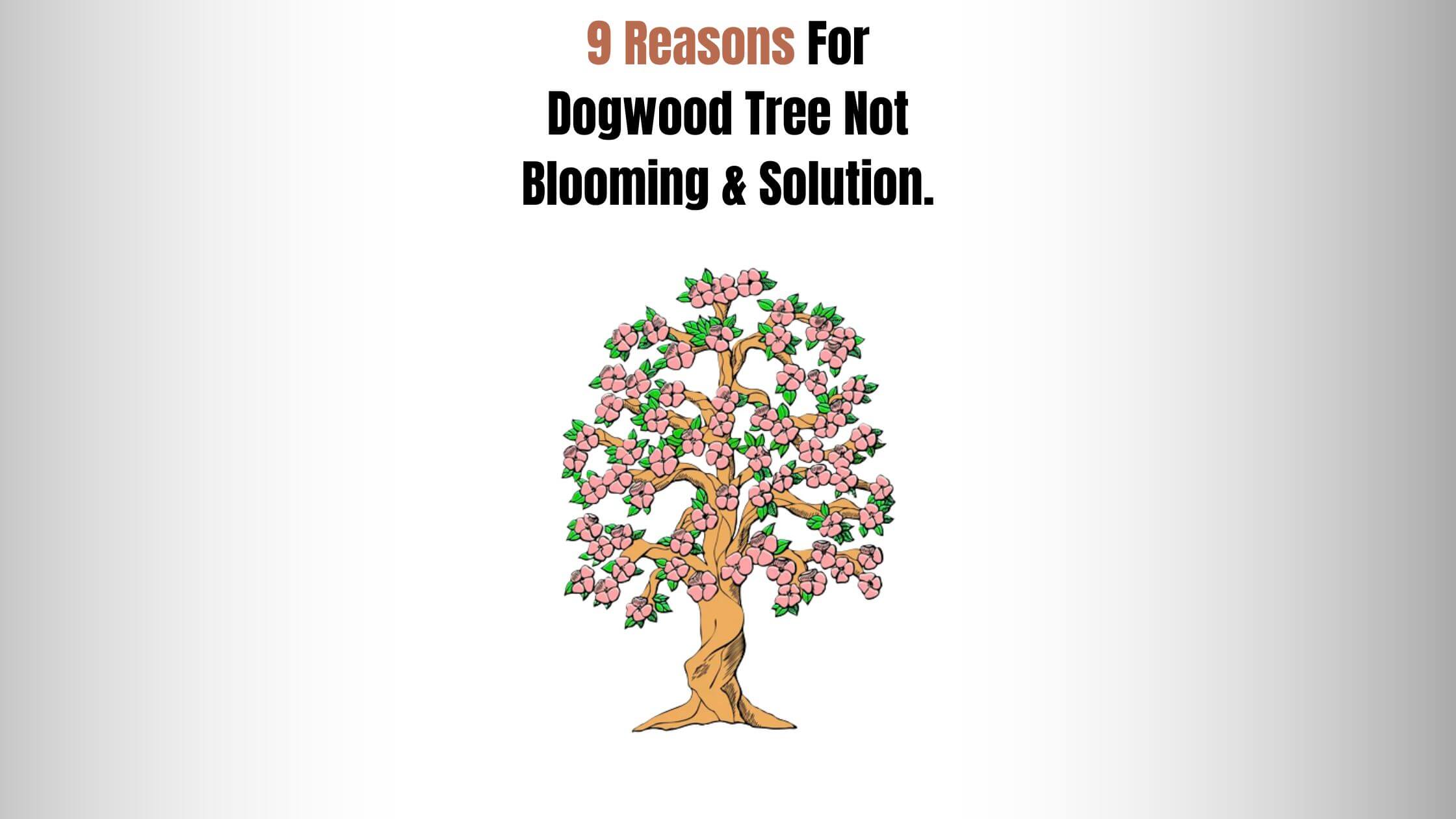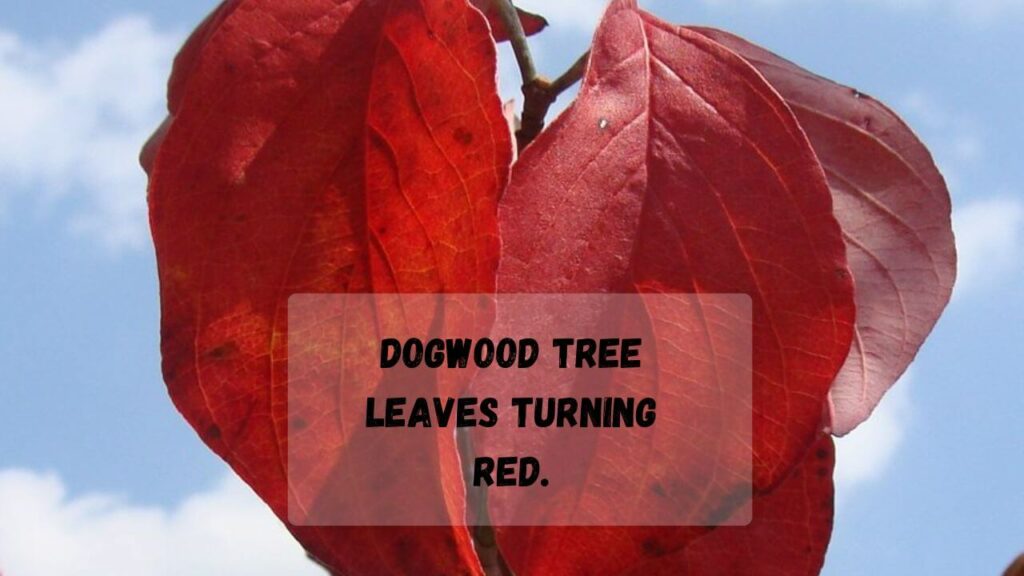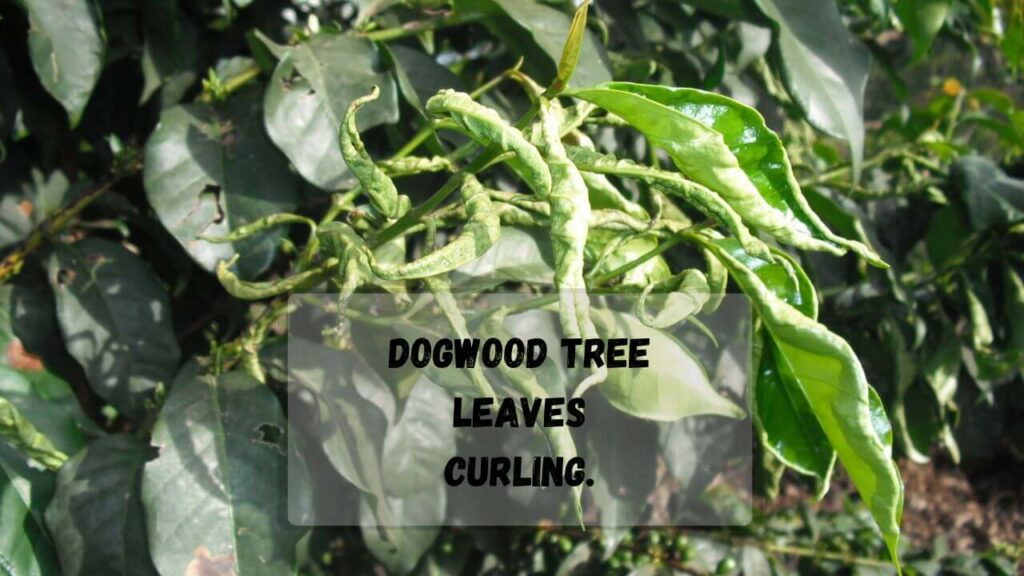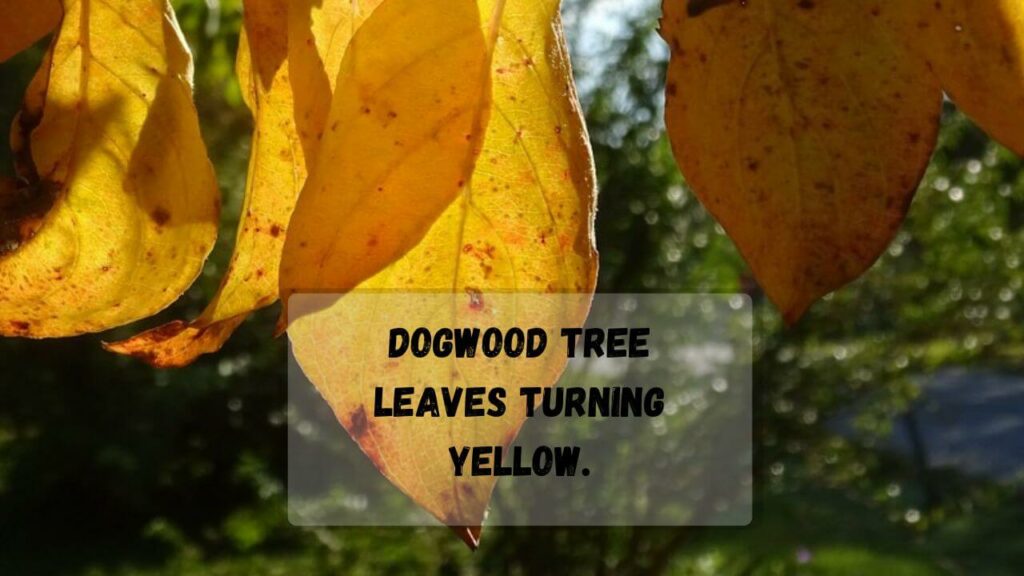
The dogwood tree is known for its early spring blooms and attractive autumn foliage, making them a popular choice for ornamental and landscaping purposes. However, just like any tree, a dogwood tree is likely to experience issues with its leaves if they don’t get in the proper condition to grow.
This article will discuss the most common problem with dogwood tree leaves, including Dogwood Tree Leaves Curling, or turning brown, yellow, and even black leaves.
We will discuss how to treat each issue systematically for better results and encourage trees to produce lots of spring blooms in vibrant colors. First, let’s understand why dogwood trees do not bloom and the appropriate steps to fix them.
9 Reasons For Dogwood Tree Not Blooming & Solution.
Inadequate Sunlight
If your dogwood tree does not get the proper sunlight during the daytime, its leaves will turn yellow. If you notice poor flowering, move the tree to a light source where they get at least 4 hours of direct sunlight daily.
Overfertilization
If you notice overgrowth in your dogwood tree, you will need to reduce the amount of fertilizer. Overfertilization is going to promote overgrowth and diseases like tree rot.
Soil Moisture Issue
Another potential cause of the dogwood tree not blooming could be improper water regulation and inconsistent soil moisture. Make sure the soil is well-drained and consistently moist. You should water it regularly if the ground starts to look dry or crumbly. Make sure not to keep the soil waterlogged also. Overhead watering is going to promote diseases like root rot and fungus growth.
Pest Infestation
A dogwood tree is prone to insects & pests, which can hinder your tree growth and damage the root leaves and stems of dogwood. This might be the reason why your dogwood tree is not blooming. In this case, I recommend you use the appropriate insecticide or pesticide recommended by an arborist or horticulturist.
Diseases
If you notice leaves with holes or spots with poor to no flowering, the dogwood tree will likely suffer from diseases like dogwood anthracnose. However, do note that small leaf spot is also caused due to Discula Destructive. If this is the cause of the dogwood tree not blooming, consider taking arborists’ help, even if it is an expensive call.
Improper Pruning Or Pruning At the Wrong Time
Sometimes you prune the dogwood tree before it gets a chance to bloom properly. It is also important to only prune if there is any dead branch or dead leave around. It will help if you have yet to try pruning a tree before its blooming period, even though you want to reshape it. As per the rule of thumb, it is better to prune after the blooming period.
Age
If your dogwood tree is young or yet to mature, don’t expect it to bloom a lot. The same goes for an ancient tree as well. If your plant dog’s tree is yet to fully mature, consider ring fertilizers. Only the other hand, if it is two years old, replant it with a younger healthy tree.
Lack Of Nutrients
A dogwood tree blooms improperly and turns its leaf color yellow due to a lack of nutrients. It is essential to fertilize the dogwood tree with a well-balanced slow-release fertilizer or fertilizer spikes. No matter what fertilizer you get, both granular and liquid forms work.
Extreme / Sudden Weather Change
Since dogwood trees don’t tolerate extreme weather changes, you should provide winter protection if there is too much cold. Also, locate your tree based on its specific needs and hardiness zone.
You should provide at least 4 hours of direct sunlight on it a day during the months. This might be the reason why your dogwood tree failed to bloom properly. Sometimes you notice broken branches with little to no flowering due to extreme weather conditions.
5 Other Common Dogwood Tree Leaves Issues.
Dogwood Tree Leaves Turning Brown And Curling.
There can be many causes of Dogwood Tree Leaves Curling. The first thing that you need to look at is environmental stress. Do note that extreme head heat, cold temperature, or sudden drought may cause anxiety in dogwood trees resulting in Brown and curling leaves.
Sometimes it results from diseases like anthracnose or powdery mildew, which yields its leaves to turn down and curl. To inspect and treat it properly, it is essential to determine the exact cause of bending brown leaves in a tree.
The solution will depend upon the severity of the problem and its precise cause. Make sure to scrutinize the tree; if it is suffering from drought stress, you must provide adequate water. You must treat the disease using the appropriate fungicide if the condition is the cause.
Dogwood Tree Leaves Turning Red.

If you notice your dogwood tree leaves turning red in the fall, there is nothing to be worried about. Dogwood trees are known to turn red leaves during the fall season as a standard color change.
However, something must be fixed if your tree turns red in summer. Firstly I want you to identify the cause of red leaves by inspecting the dogwood tree.
Red leaves might be a sign of an underlying disease that is waiting for an appropriate fungicide. If the red lead is a standard color change, there is nothing you need to do.
Dogwood Tree Leaves Curling.

I don’t know if you know this, but dogwood trees are prone to environmental stress. Any extreme temperature change may cause the dogwood tree to curl. As said earlier, certain diseases cause leaves to curl but with dark brown spots.
Dogwood Tree Leaves Turning Yellow.

If your dogwood tree leaves turn yellow, there might be something wrong with the soil quality or the nutrients it is getting. Nutrient deficiency causes the dogwood tree leaves to turn yellow.
Make sure your tree has a high nitrogen level; if not, consider adding fertilizer to the soil. The best fertilizer for this purpose is 16-4-8 fertilizer, available in all gardeners’ stores. Sometimes a dogwood tree also turns its leaf color yellow when dogwood anthracnose tends to be at its early stage.
Dogwood Tree Leaves Turning Black.
Any tree leaves turning black is not a good sign. It usually indicates a very severe disease, sooty mold, which can spread rapidly if not addressed correctly. Sometimes high temperatures also cause the dogwood tree leaves to burn and turn black.
Make sure to avoid keeping a dogwood tree in direct sunlight. Dogwood trees need a well-drained, slightly acidic soil with partial shade and light. It is better to use an appropriate fungicide recommended by the arborist.
11 Tips To Prevent These Problems From Recurring.
- Make sure your dogwood tree receives at least a minimum of 4 hours of direct sunlight a day.
- Also, keeping the dogwood tree soil consistently moist but not waterlogged promotes healthy blooming and prevents leaf color change issues.
- Using a balanced fertilizer and one that offers a slow-release feature is essential. Many slow-release fertilizers and fertilizer spikes are available in the market that helps you avoid over-fertilizing.
- If you notice fallen leaves or broken branches, clean them. If you don’t maintain good sanitation, disease build-up is likely.
- It would help if you never pruned a dogwood tree at the wrong time or with a bad technique. Consider consulting an arborist or horticulturist for a better understanding of pruning techniques.
- Make sure you are providing winter protection. It would help if you always chose an area protected from harsh weather, like brisk winds and storms.
- Choosing the location based on your dogwood tree’s specific needs and hardiness zone is also essential. With extreme temperatures, tree leaves can turn yellow, red, or even black, with many factors involved.
- To keep the soil fertility high and improve its health, consider adding more organic matter than chemical burns.
- It would help if you also considered avoiding root disturbance that might stress your dogwood tree to turn its leaves yellow and curl.
- Constantly monitor your dogwood tree for signs of diseases and pests to treat it at an early stage as soon as any arises.
- Ensure its soil has good drainage to prevent waterlogging and tree root rot.
Conclusion
Make sure to take care of your dogwood tree by providing adequate water, nutrients, & protection from extreme temperatures. Regular inspection should be a part of maintenance to identify any issue at an early stage and ensure that your tree remains healthy & beautiful for many years to come.
Since a dogwood tree is prone to various problems, including brown and curly leaves, red leaves, curling leaves, yellow leaves, and black leaves, understanding the cause of a specific problem can help you solve it with appropriate steps.
If you cannot find the exact cause of the dogwood tree leaves problem, consider consulting an arborist. Even though an arborist will be an expensive call, it is worth the cost if your trees return to their normal state or even better.
If you find the article helpful and get to know what causes a particular leaf issue in dogwood trees, do consider sharing it. I tried to give you all the information regarding dogwood tree leaves curling, turning red, and not blooming.
If you like this article, consider sharing it. Your share will help many people treat any problem and prevent it from recurring with their dogwood tree. Do check our other helpful guide on dogwood tree care. See you in the next post, till then, take care and goodbye.
